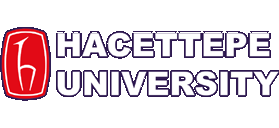ACADEMICS
Course Details
ELE634 - Digital Communications II
2025-2026 Fall term information
The course is not open this term
ELE634 - Digital Communications II
| Program | Theoretıcal hours | Practical hours | Local credit | ECTS credit |
| MS | 3 | 0 | 3 | 8 |
| Obligation | : | Elective |
| Prerequisite courses | : | - |
| Concurrent courses | : | - |
| Delivery modes | : | Face-to-Face |
| Learning and teaching strategies | : | |
| Course objective | : | |
| Learning outcomes | : | |
| Course content | : | |
| References | : |
| Weeks | Topics |
|---|---|
| 1 | Fading multipath channels. Time-variant multipath channels, statistical characterisation of multipath channels. |
| 2 | Multipath intensity profile, frequency and time selectivity, coherence time, coherence bandwidth. |
| 3 | Channel impulse response, channel model, slow fading, fast fading, |
| 4 | Mobile radio channel, digital signaling over flat and frequency selective slowly fading channels. Rake demodulator. |
| 5 | Diversity and combining techniques. Transmit vs receive diversity. Macroscopic and microscopic diversity. Time, frequency, space, angle and polarisation diversity. |
| 6 | SIMO systems. Diversity combining techniques. Pre-detection and post-detection combining. Selective and switched combining. Equal-gain combining and maximal ratio combining. |
| 7 | Midterm Exam I |
| 8 | The performance of diversity systems in fading. MISO systems with channel state information (CSI) (un)available at the transmitter. Alamouti technique. |
| 9 | MIMO systems. Diversity gain, multiplexing gain and array gain. MIMO channel capacity. |
| 10 | Multiple access communications. TDD and FDD. Fixed-assignment, demand-assignment and random access. Frequency division multiple access (FDMA), time division multiple access (TDMA) and code division multiple access (CDMA). Capacity of FDMA, TDMA and C |
| 11 | Random access methods, ALOHA, slotted ALOHA, reservation ALOHA, carrier sense multiple access (CSMA), token-ring. Polling techniques. |
| 12 | Midterm Exam II |
| 13 | Wireless access protocols and systems. WiMax, Wi-Fi, Bluetooth and Zigbee. |
| 14 | Queueing theory, Erlang-B and C formulas. |
| 15 | Preparation to Final exam |
| 16 | Final exam |
| Course activities | Number | Percentage |
|---|---|---|
| Attendance | 0 | 0 |
| Laboratory | 0 | 0 |
| Application | 0 | 0 |
| Field activities | 0 | 0 |
| Specific practical training | 0 | 0 |
| Assignments | 6 | 5 |
| Presentation | 0 | 0 |
| Project | 0 | 0 |
| Seminar | 1 | 5 |
| Quiz | 0 | 0 |
| Midterms | 2 | 40 |
| Final exam | 1 | 50 |
| Total | 100 | |
| Percentage of semester activities contributing grade success | 50 | |
| Percentage of final exam contributing grade success | 50 | |
| Total | 100 | |
| Course activities | Number | Duration (hours) | Total workload |
|---|---|---|---|
| Course Duration | 14 | 3 | 42 |
| Laboratory | 0 | 0 | 0 |
| Application | 0 | 0 | 0 |
| Specific practical training | 0 | 0 | 0 |
| Field activities | 0 | 0 | 0 |
| Study Hours Out of Class (Preliminary work, reinforcement, etc.) | 14 | 5 | 70 |
| Presentation / Seminar Preparation | 1 | 12 | 12 |
| Project | 0 | 0 | 0 |
| Homework assignment | 6 | 4 | 24 |
| Quiz | 0 | 0 | 0 |
| Midterms (Study duration) | 2 | 30 | 60 |
| Final Exam (Study duration) | 1 | 30 | 30 |
| Total workload | 38 | 84 | 238 |
| Key learning outcomes | Contribution level | |||||
|---|---|---|---|---|---|---|
| 1 | 2 | 3 | 4 | 5 | ||
| 1. | Has general and detailed knowledge in certain areas of Electrical and Electronics Engineering in addition to the required fundamental knowledge. | |||||
| 2. | Solves complex engineering problems which require high level of analysis and synthesis skills using theoretical and experimental knowledge in mathematics, sciences and Electrical and Electronics Engineering. | |||||
| 3. | Follows and interprets scientific literature and uses them efficiently for the solution of engineering problems. | |||||
| 4. | Designs and runs research projects, analyzes and interprets the results. | |||||
| 5. | Designs, plans, and manages high level research projects; leads multidiciplinary projects. | |||||
| 6. | Produces novel solutions for problems. | |||||
| 7. | Can analyze and interpret complex or missing data and use this skill in multidiciplinary projects. | |||||
| 8. | Follows technological developments, improves him/herself , easily adapts to new conditions. | |||||
| 9. | Is aware of ethical, social and environmental impacts of his/her work. | |||||
| 10. | Can present his/her ideas and works in written and oral form effectively; uses English effectively. | |||||
1: Lowest, 2: Low, 3: Average, 4: High, 5: Highest
